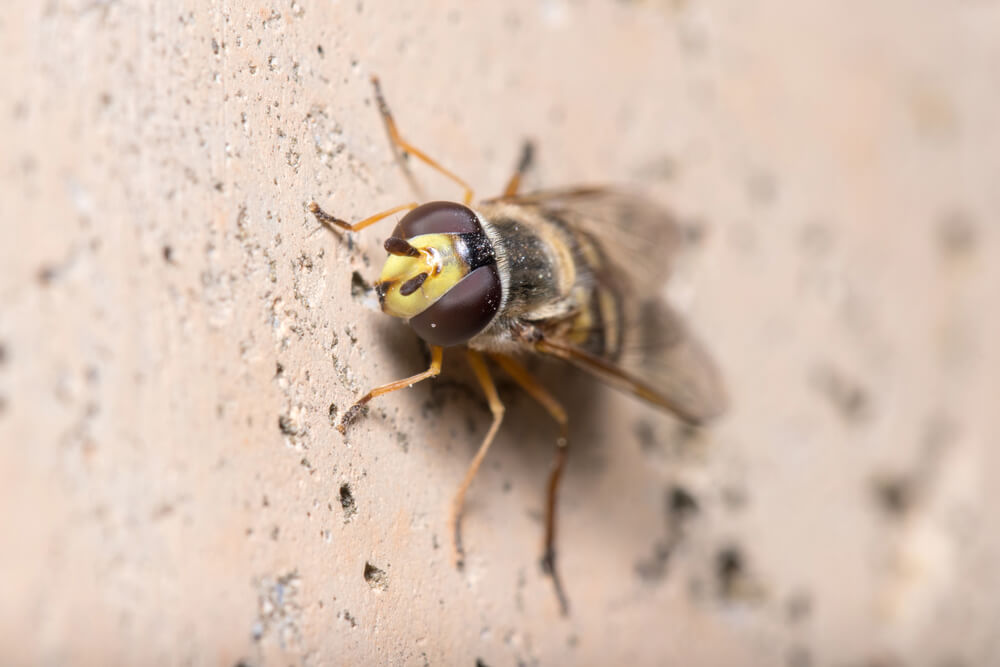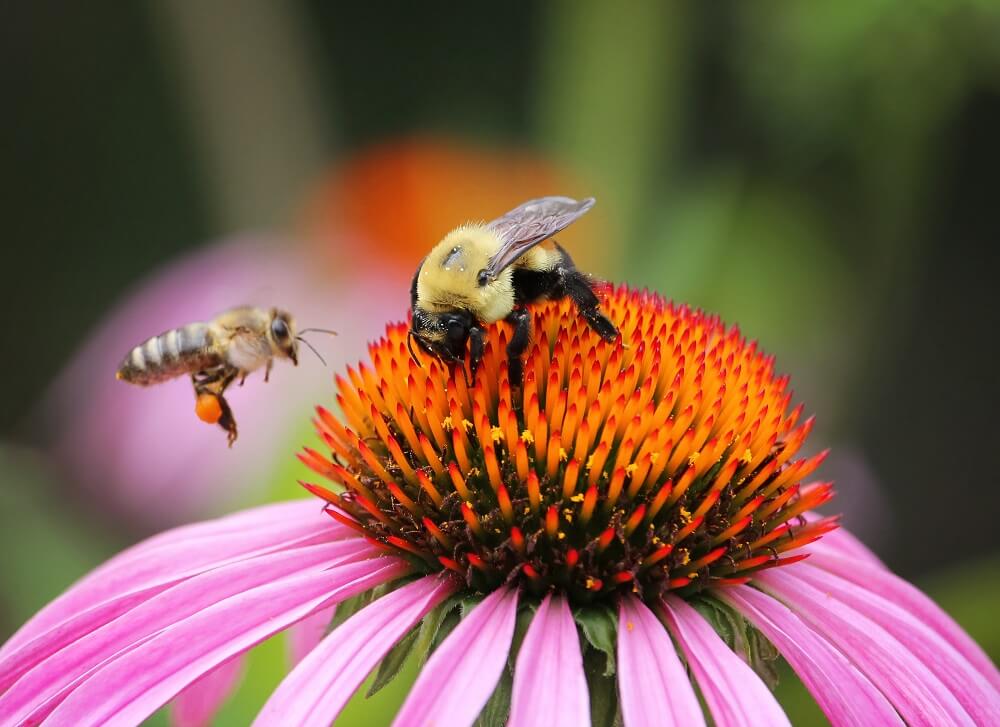Table of Contents:
What Are Flies That Look Like Bees?
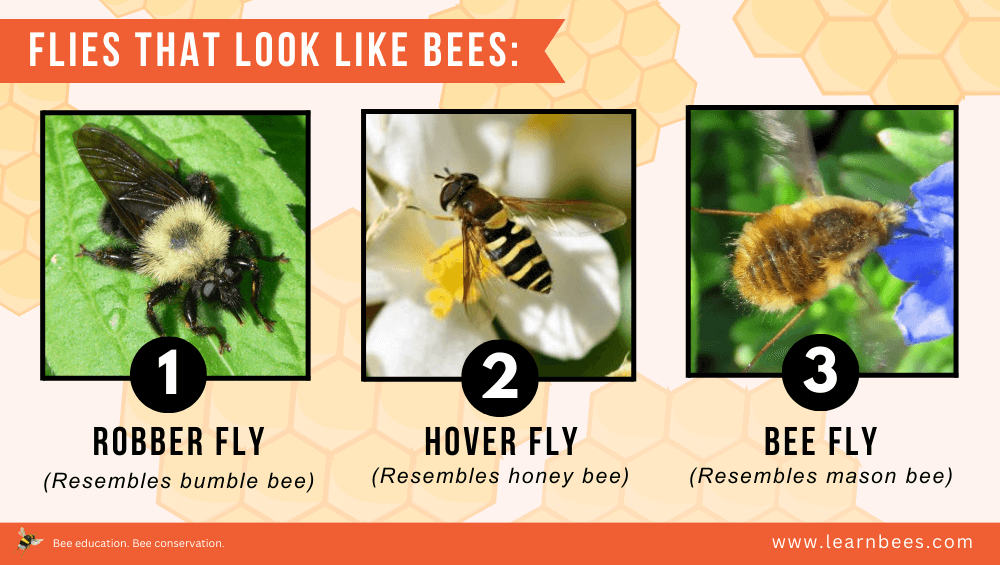
There are many types of flies that look like bees. Hover flies, robber flies, and bee flies are probably the most common bee copycats.
For example, certain robber fly species (Laphria thoracica) have evolved to look nearly identical to bumble bees. They even buzz loudly when they fly and can deliver a painful bite if touched.(1, 2)
Surprisingly though:
Robber flies actually eat bees.
Bees, on the other hand, don’t eat other insects. Instead, bees eat pollen and nectar from flowers. Bees are also passive creatures unless they need to defend their nests.
In contrast, robber flies feast on other insects. They capture their prey in mid-flight and use their sharp mouths to pierce them. Next, robber flies inject enzymes into their prey’s body which liquefies their organs and allows them to suck everything out.(3, 4)
Such robber flies (Laphria thoracica) live in North America in the northeast, midwest, south, and certain Canadian provinces.
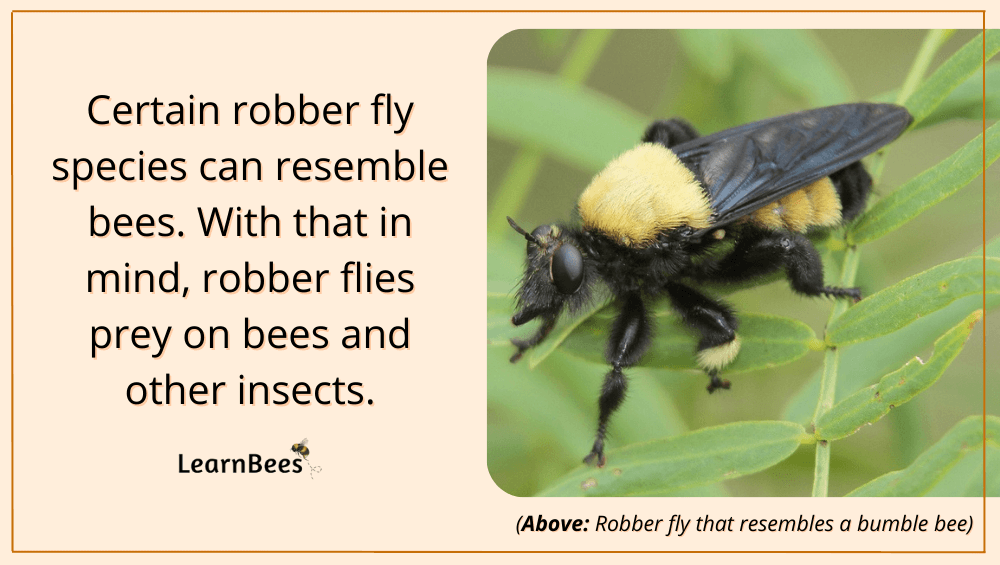
Hover flies are another type of fly that resembles bees. They’re similar in coloring and size to honey bees.
But unlike honey bees, it’s not unusual to see hover flies “hovering” around people. Sometimes, the flies will even land on you to collect salt or water off your skin.(5)
Bees are different.
Bees earn the term “busy bees” because they spend the majority of their time foraging for pollen and nectar on flowers. Bees spend little to no time flying around humans unless they’re trying to protect their nest.
But why do some flies and bees look so much alike?
The answer is simple. It’s advantageous to resemble a bee in the insect world.
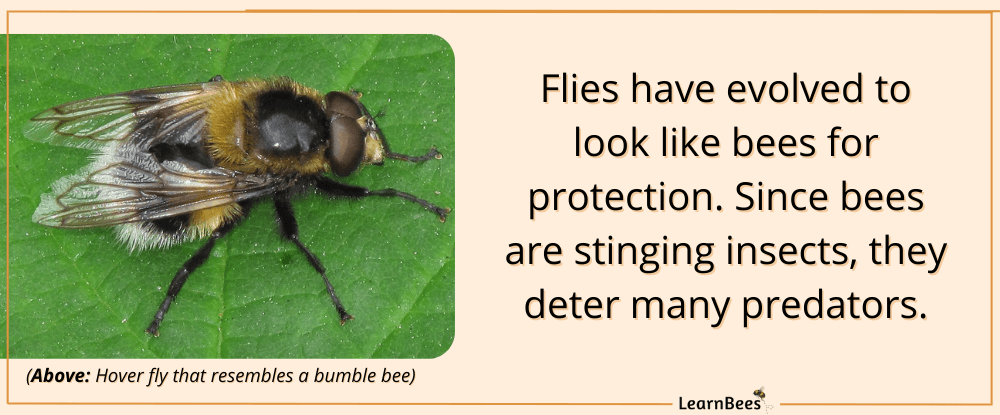
This is because bees have stingers that allow them to defend themselves from other insects, birds, and predators. Even the toughest animals—such as Grizzly bears and mountain lions—will run from a swarm of bees.
As a result, some fly species have evolved to resemble bees to reduce their chances of being eaten. However, bees and flies are totally different insects with unique habits.
When talking about bees, it’s essential to be able to tell them apart from flies, wasps, and other insects. This is harder than you might realize since scientists have classified and reclassified bees and their relatives many times over the decades.
How to Tell the Difference Between Flies and Bees
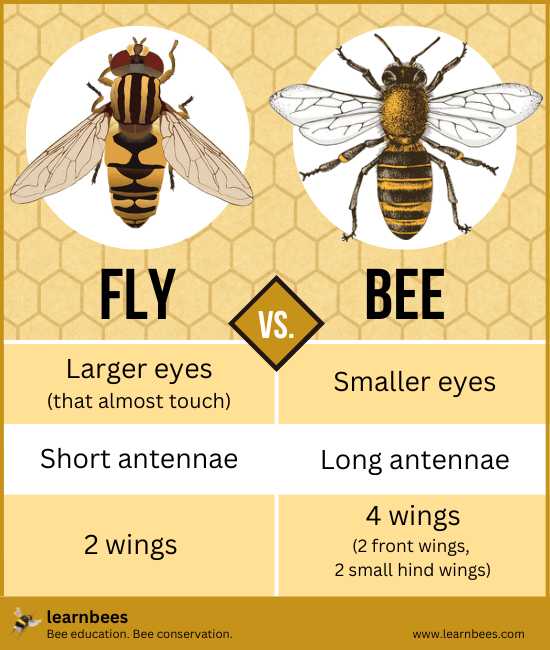
There are several physical differences between flies and bees. For starters, flies typically have eyes that are bigger and closer together than bees. In fact, fly eyes can be so large that they almost touch.
Bees are different. Most bees have smaller, separate eyes.
Secondly, flies only have two wings, while bees have four wings (two large front wings and two small back wings). Lastly, flies often have much shorter antennae than bees, while bee antennae are longer and more noticeable at a glance.
There are other slight differences, such as bees tend to be fuzzier and coated in pollen. Honey bees and bumble bees even have “pollen baskets” on their hind legs that help them carry pollen back to their nests.
Keep in mind:
There are thousands of different bee and fly species. There are over 20,000 bee species worldwide and 110,000 fly species. This means that there can be many fly species that are bee copycats.(6, 7)
However, telling the insects apart becomes easier when you learn about the differences in eyes, antennae, and wings.
FAQs About Flies That Look Like Bees
- Do hover flies sting or bite?
- What are the flies that look like carpenter bees?
- What are the little black flies that look like bees?
- Why do bot flies look like bees?
- What fly looks like a bumble bee?
- What fly looks like a sweat bee?
Do hover flies sting or bite?
Hover flies don’t sting or bite. They may hover around humans or even land on humans to gather salt and water from our skin. However, hover flies are harmless to people and pets. It’s best to leave them alone so they can pollinate flowers and eat garden pests such as aphids. They’re beneficial creatures.
—> Go back to the FAQs on flies that look like bees
More to Explore:
What are the flies that look like carpenter bees?
Certain hover fly species, also known as syrphid flies or bot flies, can look nearly identical to carpenter bees in size and coloring. However, hover flies have much larger eyes than carpenter bees. Carpenter bees also have longer antennae and four wings instead of two.
—> Go back to the FAQs on flies that look like bees
More to Explore:
What are the little black flies that look like bees?
There are many species of flies that resemble bees. Black solider flies and hover flies are two common ones.
—> Go back to the FAQs on flies that look like bees
More to Explore:
- What Are Blue Orchard Bees?
- The Fascinating Life of Queen Bees
- Queen Bee Versus Worker Bees – How Do They Compare?
Why do bot flies look like bees?
Flies have evolved to look like bees for protection. Bees are stinging insects that most animals and people don’t want to mess with. In the insect world, camouflaging yourself as a bee helps ward off potential predators that may try to eat you.
That said, flies don’t actually sting like bees do.
—> Go back to the FAQs on flies that look like bees
More to Explore:
What fly looks like a bumble bee?
Certain species of hover flies and robber flies look like bumble bees. Most flies aren’t as fuzzy as bees, however, robber flies are an exception. They can be so fuzzy that it’s hard to tell them apart from bumble bees at first glance.
Certain robber flies (Laphria thoracica) resemble common eastern bumble bee (Bombus impatiens), lemon cuckoo bumble bee (B. citrinus), and half-black bumble bee (B. vagans).
—> Go back to the FAQs on flies that look like bees
More to Explore:
Why fly looks like sweat bees?
Certain species of hover flies look like sweat bees.
